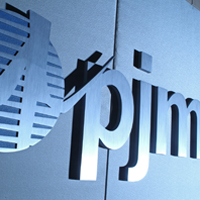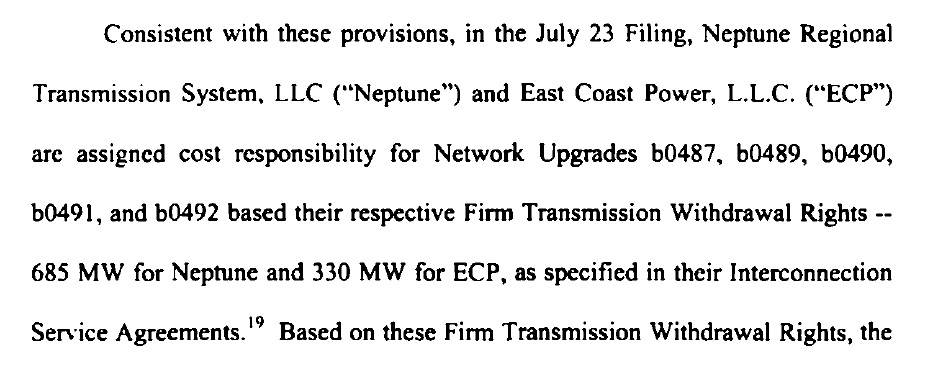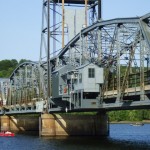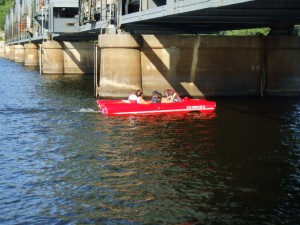PJM members set new record…
August 20th, 2011
A little birdie asked a question about need for Susquehanna-Roseland recently, and got me thinking. This PJM press release came out a while ago and I forgot to post it. It’s a legit PJM press release with an astonishing and crucial and decidedly “against interest” admission:
THEY ARE NOT USING DEMAND RESPONSE TO REDUCE LOAD!!!
Well, that makes business sense, they’re there to sell power, why refrain from selling it if they can! They’re also wanting to build more transmission, which they can’t do if they can’t prove need! And what better way to prove need than having a record peak demand? But we know what they’re doing… How many MW do they have in demand response, DSM, interruptibles, demand reduction by any name? How much lower would the peak demand be if they had used it as they should?
Here’s their press release:
And here’s that telling admission:
Demand response was not called on to reduce load.
Demand response was not called on to reduce load.
Demand response was not called on to reduce load.
Demand response was not called on to reduce load.
Demand response was not called on to reduce load.
Demand response was not called on to reduce load.
Demand response was not called on to reduce load.
Demand response was not called on to reduce load.
Demand response was not called on to reduce load.
Demand response was not called on to reduce load.
… once more with feeling…
Demand response was not called on to reduce load.
How dare they… and then to claim a “RECORD” peak demand…
Confirmed: Bulk power transfer to New York
July 1st, 2011
DUH! We all know what the point of the Susquehanna-Roseland transmission is, PSEG! Back during the Susquehanna Roseland hearing, I introduced a FERC filing reflecting the 660MW transfer across the river to New York, that was what, a year and a half ago now?
So how is this Firm Transmission Withdrawal Rights for 685MW and 330 MW is news? The NJ BPU was NOT in the dark about this…
Now where’s that other 670MW… Exhibit 96… it’s in here somewhere… here’s a post from November, 2009:
How far down does electrical demand have to go…
Here’s yesterday’s piece from the New Jersey Spotlight:
Federal Agency OK’s Power Transfer from New Jersey to New York
PATH transmission line WITHDRAWN!!!!
February 28th, 2011
The application for the Potomac Appalachian Transmission Highline, PATH, has been withdrawn. Notice was just sent out, not long after PJM issued a press release saying that PATH was “delayed.”
And here’s the one we’ve been waiting for, Potomac Edison’s Notice of Withdrawal (that didn’t take long!):
I’m looking on the PJM website, and can’t find the 2010 RTEP, so I call the number on the bottom of the Press Release, 866-756-6397, wanting to know where the 2010 RTEP is (one of the attorneys on the Susquehanna-Roseland line had asked about that, and I was stunned I couldn’t find it!!!), and when the 2011 RTEP is due out. No one can help, they’re in a meeting, “anyone that could help you is in a meeting.” Someone will call back… Uh-huh… right…
What they say is what we’ve been saying for how long?
PJM annually reviews its transmission expansion plans. A preliminary analysis suggests that the need for the line has moved further into the future. Therefore, the PJM Board has decided to hold the PATH project in abeyance in the 2011 Regional Transmission Expansion Plan (RTEP). The preliminary analysis used the most current economic forecasts, demand response commitments and potential new generation.
…
Over the last two years, the recession and the dramatic change in the economic outlook caused PJM to forecast lower growth in the use of electricity. Growth in the use of electricity correlates with economic growth. The forecasted slower growth rate likely will delay the need for the line.
So now, how to find that 2010 RTEP???
PEPCO is falling down on the job
December 12th, 2010
Nearly two years ago, I attended a hearing for the Delmarva Power Integrated Resource Plan, which was the most bizarre hearing I’ve ever experienced. At that time, I raised issues about decreasing demand, entered into the record the PJM demand documents that we’d used in the Susquehanna-Roseland transmission docket in New Jersey (also PJM), and raised concerns that no SAIDI, SAIFI and CAIDI reliability info was reported. After that meeting, I presented Delmarva Power’s attorney Todd Goodman with a well-deserved “Horse’s Ass” award for his performance at that meeting. The points I’d raised at that meeting about what was missing in their “IRP” were oh-so-valid:
It took a while, but last week, the Washington Post featured an article showing that PEPCO, utility in D.C. and Maryland, and the corporate parent of Delmarva Power, has an inexcusably miserable record for outages. That’s something that’s demonstrated in the SAIDI, SAIFI and CAIDI reports! And folks, don’t go conflating transmission with distribution as the cause for the outages, as utilities would have you do. Anyway, here’s that article:
Washington Post Analysis: Why PEPCO can’t keep the lights on
As you read the article, note there’s not a word on D-E-R-E-G-U-L-A-T-I-O-N as a contributory factor, much less the primary reason.
Washington Post analysis: Why Pepco can’t keep the lights on
Moreover, Pepco has long blamed trees as a primary culprit for the frequency and duration of its outages, implying that the problem is beyond its control. But that explanation does not hold up under scrutiny, The Post analysis found. By far, Pepco equipment failures, not trees, caused the most sustained power interruptions last year.
Read the rest of this entry »
NPS: No Stillwater Bridge
October 18th, 2010
Friday the National Park Service said NO to the Stillwater Bridge across the Wild & Scenic St. Croix River.
This is the same NPS, but a different region, that has the Susquehanna-Roseland transmission line crossing of the Wild & Scenic Delaware Water Gap under review.
This Stillwater Bridge mess has been a decades long struggle.
When I heard about this on Friday, I started looking for the primary documentation, and couldn’t even find a press release. Then this a.m., a little birdie sent the press release…
… but alas, he had no primary documentation either! And so onward with the search, and still nothing, then, lo, another birdie dropped these into my inbox:
National Park Service – Transmittal Letter
National Park Service – Stillwater Bridge – Section 7a Review Final
Is there a trend? We can only hope…






